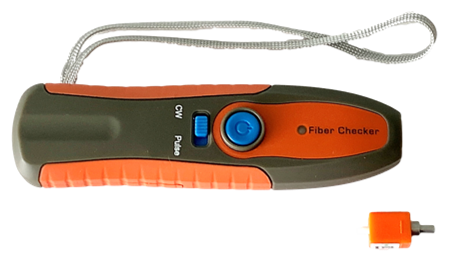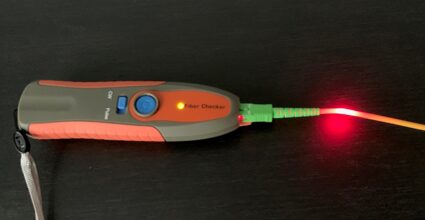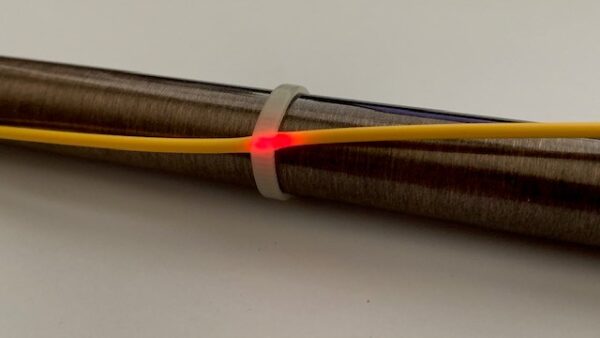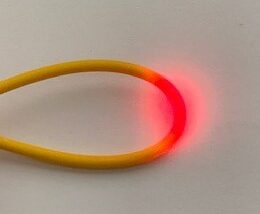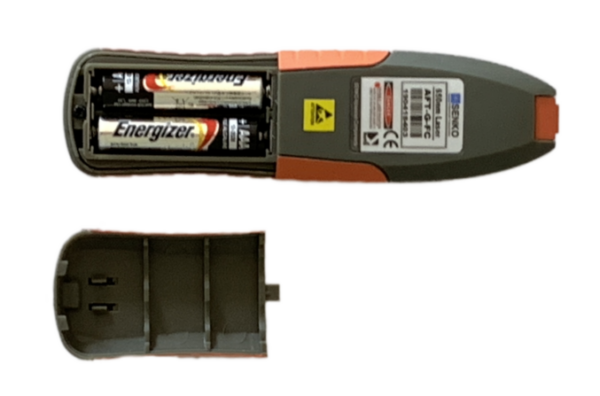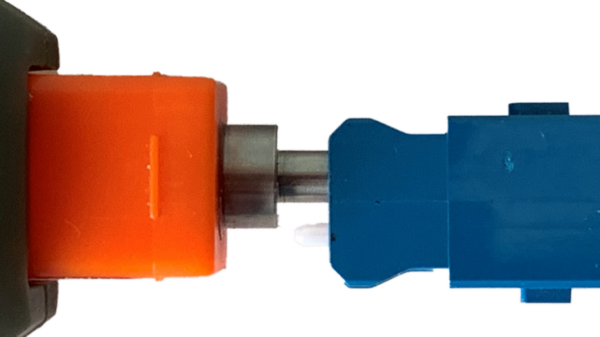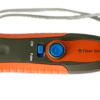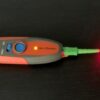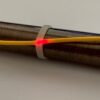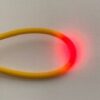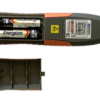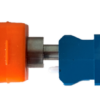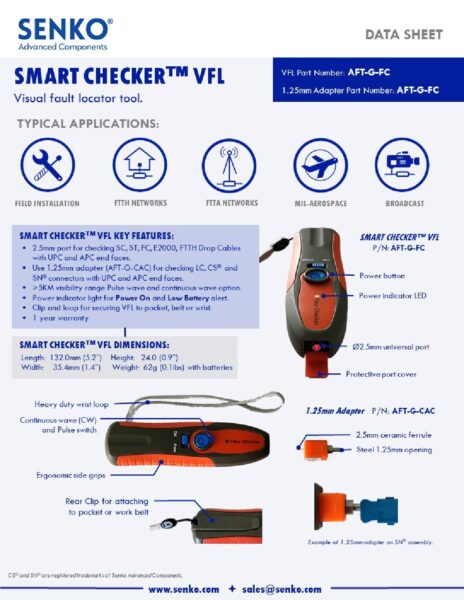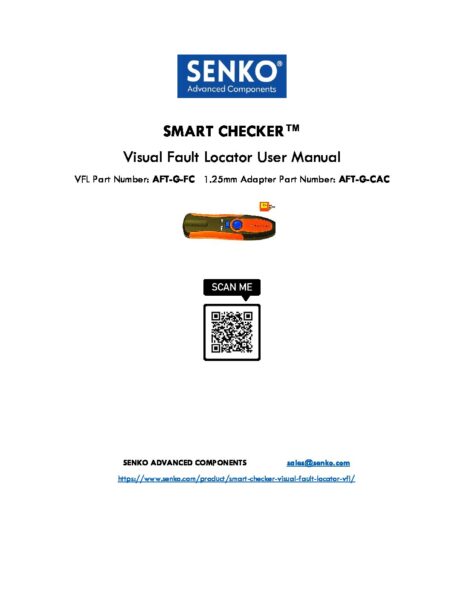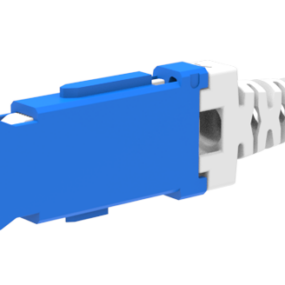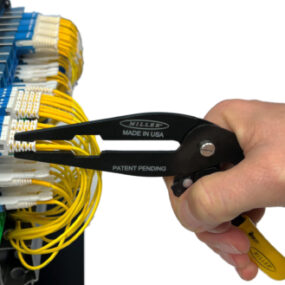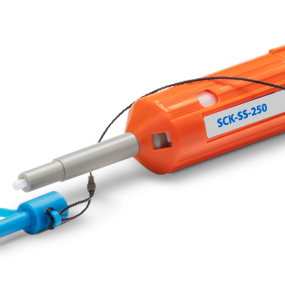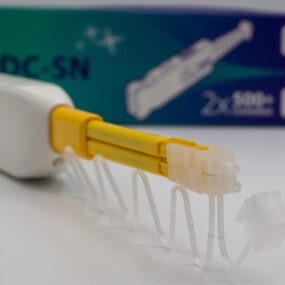SMART CHECKER VFL
VFL Part Number: AFT-G-FC
1.25mm Adapter Part Number: AFT-G-CAC
- Continuous Wave, Pulse Wave operation mode
- Reach of >5KM
- Works for UPC and APC assemblies
Email us at sales@senko.com or talk with your local SENKO Sales Representative for pricing.
| Senko Part Number: | AFT-G-FC |
| 1.25mm Adapter Part Number: | AFT-G-CAC |
| Wavelength: | 650nm ± 10nm @ +25°C |
| Spectral Width: | 10nm |
| Laser Class: | Class 2M |
| Emitting Range: | > 5KM |
| Output Power: | > -3dBm @ 25°C into singlemode fiber |
| Operating Temp Range: | 0°C to +50°C |
| Storage Temp Range: | 0°C to +70°C |
| Applicable Connectors: | SC ST FC E20000 LC SN CS MU IP-SOLID IP-16 SC IP-9 SC IP-16 SN IP-25 IP-9 LC |







The SMART CHECKER™ using a 650nm Class 2M laser for the light source. The will make the red signal bright after going more than 5KM. It is always wise to avoid intentionally stare at into any laser, however, the light in this VFL will not harm someone who accidently looks at the laser for split second.
A micro bend is a pinch point that causes restricts the light signal’s path and causes some of the light to escape. A macro bend happens when the fiber’s bend radius is exceeded causing some of the light to escape. The SMART CHECKER™ VFL’s light is strong enough that for the RED light to be tough most indoor cables with a 900um tight buffer, aramid yarns and jacket. When you see the light red light escaping, you can decide the best course of action to take to alleviate the problem.
The SMART CHECKER™ VFL has a protective port cover to protect the ferrule stub end face The protective cover should be kept in the shut position when the VFL in not use.
The best practice would be to periodically clean the VFL port once every few months under normal conditions. The most effective way to clean the port is to use a 2.5mm cleaning stick. The stick will clean the ferrule stub end face while also wiping away potential dusts residing on along the port’s inner walls.
Remember, the best way to avoid accidental cross contaminating your cable assemblies is to inspect the end faces before mating.
When alkaline batteries released the stored power, it forms a gas inside of the battery. Overtime, the gases build up inside and will occasionally overstress the battery’s seams. This causes a leak which usually appears as a appears as white or light gray crystals. The leak material is an base (>pH of 7).
The simplest and easiest way to address a leaking alkaline battery is to use a common household acid (<7 pH) like lemon juice with a cotton swab.
- Dispose of the leaking batteries
- Wet the head of the cotton swab with the lemon juice or another acidic liquid.
- Brush the battery contacts with the cotton swab
In most cases, this will clean the battery contacts so that you may continue using your VFL. It is recommended to always take the batteries out of any device that is going to placed in storage for extended period of time.
